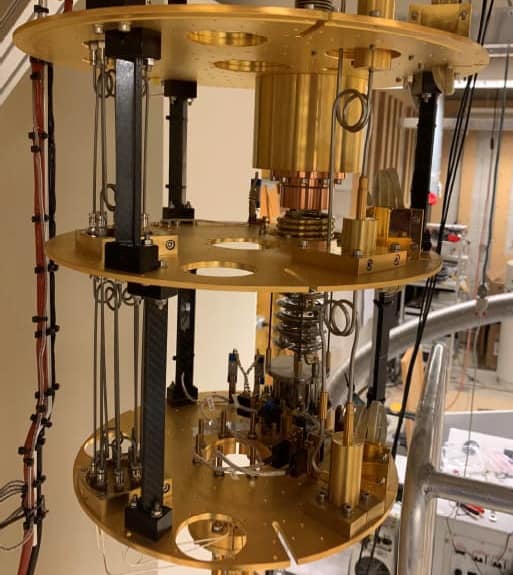This experiment can be used to solve several questions that scientists have been seeking the answers to for years.
Get the latest international news and world events from around the world.
Think more rationally with Bayes’ rule | Steven Pinker
The formula for rational thinking explained by Harvard professor Steven Pinker.
Up next, The war on rationality ► https://youtu.be/qdzNKQwkp-Y
In his explanation of Bayes’ theorem, cognitive psychologist Steven Pinker highlights how this type of reasoning can help us determine the degree of belief we assign to a claim based on available evidence.
Bayes’ theorem takes into account the prior probability of a claim, the likelihood of the evidence given the claim is true, and the commonness of the evidence regardless of the claim’s truth.
While Bayes’ theorem can be useful for making statistical predictions, Pinker cautions that it may not always be appropriate in situations where fairness and other moral considerations are important. Therefore, it’s crucial to consider when Bayes’ theorem is applicable and when it’s not.
0:00 What is Bayesian thinking?


ARTEMIS: ‘World’s fastest’ humanoid robot readies for RoboCup
The University of California, Los Angeles (UCLA), Samueli School of Engineering has developed Advanced Robotic Technology for Enhanced Mobility and Improved Stability (ARTEMIS), a cutting-edge humanoid robot.
The robot will travel to Bordeaux, France, in July to compete in the soccer match of the 2023 RoboCup, as per a press release by the university on Friday.

The Nobel Prize in Physics 1973
Was divided, one half jointly to Leo Esaki and Ivar Giaever ‘for their experimental discoveries regarding tunneling phenomena in semiconductors and superconductors, respectively’ and the other half to Brian David Josephson ‘for his theoretical predictions of the properties of a supercurrent through a tunnel barrier, in particular those phenomena which are generally known as the Josephson effects’

How Einstein tried to model the shape of the Universe
To keep his Universe static, Einstein added a term into the equations of general relativity, one he initially dubbed a negative pressure. It soon became known as the cosmological constant. Mathematics allowed the concept, but it had absolutely no justification from physics, no matter how hard Einstein and others tried to find one. The cosmological constant clearly detracted from the formal beauty and simplicity of Einstein’s original equations of 1915, which achieved so much without any need for arbitrary constants or additional assumptions. It amounted to a cosmic repulsion chosen to precisely balance the tendency of matter to collapse on itself. In modern parlance we call this fine tuning, and in physics it is usually frowned upon.
Einstein knew that the only reason for his cosmological constant to exist was to secure a static and stable finite Universe. He wanted this kind of Universe, and he did not want to look much further. Quietly hiding in his equations, though, was another model for the Universe, one with an expanding geometry. In 1922, the Russian physicist Alexander Friedmann would find this solution. As for Einstein, it was only in 1931, after visiting Hubble in California, that he accepted cosmic expansion and discarded at long last his vision of a static Cosmos.
Einstein’s equations provided a much richer Universe than the one Einstein himself had originally imagined. But like the mythic phoenix, the cosmological constant refuses to go away. Nowadays it is back in full force, as we will see in a future article.

Retro Bio’s $180m backer finally revealed
Retro Biosciences’ mysterious backer has finally been revealed!
In 2021 the longevity industry received one of its largest investments to date, with a $180m investment being made into the pharmaceutical start known as Retro Biosciences, or Retro Bio for short. Not only was this investment cause for celebration within the field of regenerative medicine, but it also came with a tantalising mystery, as the backer, or indeed backer, did not make themselves publicly known. It was assumed that due to the secrecy involved, it was likely that this investment had come from a small number of individuals, potentially just a single backer. This mystery backer, combined with the notable capital investment, led to much media attention at the time, and has since garnered a significant amount of interest in Retro Bio from both the general public and future potential financial backers. That was until last week, when the mystery backer finally decided that now was the right time to reveal their identity to the general public.
In an interview with MIT Technology review, American entrepreneur Sam Altman revealed that he was the sole backer for the pharmaceutical start-up, who single handily provided the entire $180m investment. Sam Altman, who primarily made his fortune in the tech industry (specifically through social media companies such as Loopt) has become somewhat of an angel investor for a slew of world changing, innovative companies which are involved in everything from artificial intelligence to nuclear energy. It is hoped that this significant single investment marks the beginning of a longevity tech boom, similar to what was seen during the dot-com boom (but hopefully without the disastrous ending).

